Sql Kill Spid Without Rollback
In certain situations, it may be necessary to terminate a SQL Server process (SPID) without performing a rollback. This can be due to various reasons, such as a process being stuck or running for an extended period of time, causing performance issues or blocking other transactions. Killing a SPID without rollback allows for the termination of the process immediately, without waiting for it to complete or rolling back any changes it has made.
Identifying the specific situation where killing the SPID without rollback is necessary
There are several scenarios where killing a SPID without rollback becomes necessary. One common situation is when a process is causing a significant impact on the server’s performance. This can be due to a poorly written query or a process that is consuming excessive resources. In such cases, terminating the process without waiting for a rollback can help alleviate the performance issues.
Another scenario is when a process is blocking other transactions. If a process is holding locks and preventing other processes from accessing necessary resources, killing the SPID without rollback can be an effective solution to release the locks and allow other transactions to proceed.
Exploring the risks and consequences of killing a SPID without rollback
Killing a SPID without rollback carries certain risks and consequences that need to be considered. The most significant risk is the potential loss of data integrity. When a SPID is terminated without rolling back the changes it has made, any incomplete transactions or uncommitted changes will remain in the database. This can lead to inconsistencies or incomplete data.
Additionally, killing a SPID without rollback can cause concurrency issues. If other processes are dependent on the changes made by the terminated process, they may encounter errors or unexpected behavior due to the incomplete or interrupted state of the data.
Implementing alternative methods to terminate a SPID without causing a rollback
Before resorting to killing a SPID without rollback, it is recommended to explore alternative methods to terminate the process gracefully. One such method is to identify and resolve any performance issues or blocking situations that may be causing the need for termination. Optimize the query, allocate more resources, or resolve any conflicts to allow the process to complete naturally.
If resolving the underlying issues is not possible or time-consuming, another approach is to use the KILL WITH STATUSONLY command. This command allows you to check the progress of the query and determine if it can be safely terminated without rollback. If the query is in a non-rollbackable state, you can use the KILL command to terminate the SPID immediately.
Examining the steps for killing a SPID without rollback in SQL Server Management Studio (SSMS)
To kill a SPID without rollback in SQL Server Management Studio (SSMS), follow these steps:
1. Open SSMS and connect to the appropriate SQL Server instance.
2. Open a new query window.
3. Identify the SPID of the process you wish to terminate using the following query: “SELECT * FROM sys.sysprocesses WHERE [status] = ‘running'”
4. Once you have identified the SPID, use the KILL command to terminate it without rollback. For example: “KILL
5. Verify that the process has been terminated by checking the process list again using the same query in step 3.
Understanding the potential impact on data integrity when killing a SPID without rollback
When a SPID is killed without rollback, there is a potential impact on data integrity. Any incomplete transactions or uncommitted changes made by the terminated process will remain in the database. This can result in inconsistencies or incomplete data.
It is important to assess the potential impact on data integrity before deciding to kill a SPID without rollback. Consider the nature of the process and the changes it has made. If there is a risk of data corruption or inconsistencies, it may be necessary to explore alternative methods or find a way to gracefully terminate the process.
Best practices to mitigate the risks and ensure successful termination of a SPID without rollback
To mitigate the risks associated with killing a SPID without rollback and ensure successful termination, it is important to follow best practices:
1. Evaluate the necessity of killing the SPID without rollback and consider alternative methods to resolve the underlying issues.
2. Before killing the SPID, analyze the potential impact on data integrity and take necessary precautions.
3. Use the KILL WITH STATUSONLY command to check the progress of the query and determine if it can be safely terminated without rollback.
4. Ensure that the SPID being terminated is not your own process, as the KILL command cannot be used to kill your own process.
5. After killing the SPID, verify that it has been successfully terminated by checking the process list again.
6. Monitor the system after termination to ensure that there are no unexpected issues or errors caused by the incomplete or interrupted state of the data.
FAQs:
1. Can I use the KILL command to kill my own process?
No, the KILL command cannot be used to kill your own process. This is to prevent accidental termination of your own session.
2. How can I kill a session in SQL Server?
To kill a session in SQL Server, you can use the KILL command followed by the SPID of the session you wish to terminate. For example: “KILL
3. How do I kill a process in SQL Server?
To kill a process in SQL Server, you can use the KILL command followed by the SPID of the process you wish to terminate. For example: “KILL
4. What is the purpose of KILL spid WITH statusonly?
The KILL spid WITH statusonly command allows you to check the progress of a query and determine if it can be safely terminated without rollback.
5. Can I kill a transaction in SQL Server?
Yes, you can use the KILL command followed by the SPID of the transaction you wish to terminate. For example: “KILL
6. What is a SPID?
A SPID (Server Process ID) is a unique identifier assigned to each user process connected to a SQL Server instance.
7. What is the difference between kill spid rollback immediate and kill spid without rollback?
The “kill spid rollback immediate” command terminates a process and rolls back any changes it has made. On the other hand, “kill spid without rollback” terminates a process without performing a rollback, leaving any incomplete transactions or uncommitted changes in the database.
8. How can I check the running queries in SQL Server?
You can check the running queries in SQL Server by using the “sp_who” or “sp_who2” system stored procedures or by querying the “sys.sysprocesses” system view.
Can You Tell When A Rollback Will Finish?
Keywords searched by users: sql kill spid without rollback Cannot use kill to kill your own process, Kill session SQL Server, Kill process SQL Server, Kill spid WITH statusonly, Kill transaction SQL Server, Spid, kill spid rollback immediate, Check query running SQL Server
Categories: Top 77 Sql Kill Spid Without Rollback
See more here: nhanvietluanvan.com
Cannot Use Kill To Kill Your Own Process
The kill command is a powerful tool used in Unix-like operating systems to terminate a process. However, it is important to note that you cannot use the kill command to kill your own process. This limitation is in place to prevent accidental termination of critical processes, which could potentially result in system instability or data loss. In this article, we will delve deeper into the reasons behind this restriction, explore alternative methods for terminating your own process, and address some frequently asked questions regarding this topic.
Why can’t you kill your own process?
The restriction on killing your own process exists for several reasons. One of the primary reasons is to ensure system stability. Processes have a specific structure and hierarchy within the operating system. Allowing a process to terminate itself could lead to unexpected consequences and disrupt the overall functioning of the system. For example, if the process being terminated is responsible for important system tasks, terminating it could cause the system to crash or become unstable.
Another reason for this limitation is to protect against accidental terminations. Imagine a scenario where a critical process is accidentally terminated by its own process. This could potentially lead to data loss, corruption, or other adverse effects. By preventing a process from killing itself, the operating system minimizes the chances of such accidental incidents occurring.
Additionally, allowing a process to kill itself could be exploited by malicious software. If a process could terminate itself, a malicious program could force a critical process to terminate and take control of the system. The restriction imposed on killing your own process adds an extra layer of security and helps protect the system from such attacks.
Alternative methods for terminating your own process
Although you cannot use the kill command to kill your own process directly, there are alternative methods available to achieve this goal. One common approach is to send a specific signal to your own process, requesting it to gracefully terminate itself. The most commonly used signal for this purpose is SIGTERM, which stands for “termination signal.” This signal advises the process to clean up any resources it may be using and terminate itself gracefully.
To send a SIGTERM signal to your own process, you can use various methods, including the kill command with the process ID (PID) of your own process. For example, if you want to terminate a process with a PID of 12345, you can execute the following command:
`kill -TERM 12345`
Alternatively, you can use the pkill command to send a signal to your own process. For instance, the following command will send a SIGTERM signal to a process named “my_process”:
`pkill -TERM my_process`
It is essential to note that even when using these alternative methods, the operating system may still impose certain restrictions on self-termination. For example, the process may need to have specific privileges or permissions to receive and handle the termination signal successfully.
FAQs
Q: Can I terminate my own process without using external commands?
A: While it is not possible to directly kill your own process using the kill command, you can gracefully terminate it by handling the SIGTERM signal appropriately within your code. This approach allows your process to perform any necessary cleanup and exit gracefully.
Q: Are there any risks associated with terminating my own process?
A: Termination of your own process can have consequences, such as potential loss of unsaved data or incomplete operations. It is crucial to handle termination correctly to ensure that the process exits gracefully without causing any adverse effects or data corruption.
Q: Can I forcefully terminate my own process?
A: Forcefully terminating your own process, bypassing any cleanup operations, is generally not recommended. It can lead to resource leaks and other issues that may impact the stability and performance of the system. It is always preferable to handle termination gracefully.
Q: What happens if I try to kill my own process with the kill command?
A: If you attempt to kill your own process using the kill command, you will likely receive an error message stating that the operation is not permitted. This is the expected behavior due to the restriction imposed by the operating system.
In conclusion, you cannot use the kill command to kill your own process in Unix-like operating systems. This restriction is in place to protect system stability, prevent accidental terminations, and enhance overall security. However, alternative methods exist, such as sending a SIGTERM signal, to gracefully terminate your own process. It is essential to handle process termination correctly to avoid any adverse effects or data loss.
Kill Session Sql Server
SQL Server is a powerful relational database management system widely used in enterprise environments. It allows multiple users to connect and execute queries concurrently. However, sometimes a particular session may become a bottleneck or hinder the overall performance of the database. In such cases, killing that session can be an effective solution.
To kill a session in SQL Server, you need sufficient privileges, usually in the form of administrative access. Once you have the necessary permissions, you can use the KILL command followed by the session ID. The session ID is a unique identifier assigned to each active session in the database.
The syntax for the KILL command is as follows:
KILL { session ID }
For example, if you want to terminate session 57, you would enter:
KILL 57
It’s important to note that killing a session forcefully terminates the associated query without any regard to its progress or any intermediate results. Therefore, it should be used judiciously, and only when necessary.
Now, let’s move on to the frequently asked questions related to killing a session in SQL Server:
Q: What happens when a session is killed?
A: When a session is killed, the associated query is terminated immediately, and any resources held by that session are freed up. This can include locks, memory, and CPU resources.
Q: How can I identify the session ID of a query or process that needs to be killed?
A: You can use various methods to identify the session ID. One common approach is to query the sys.dm_exec_requests and sys.dm_exec_sessions dynamic management views, which provide information about the running queries and associated sessions.
Q: Can killing a session lead to data corruption or loss?
A: Killing a session does not directly cause data corruption or loss. However, terminating a query abruptly can leave the database in an inconsistent state if the query was performing a critical operation. It is always recommended to analyze the impact of killing a session before proceeding.
Q: What are the potential risks of killing a session?
A: Killing a session poses a few risks. If the session was holding locks on resources, it may result in blocking or deadlocking situations. Additionally, if the session was performing a transaction, killing it can leave the database with an incomplete or uncommitted transaction. Proper analysis and evaluation of the consequences are crucial before killing a session.
Q: Are there any alternatives to killing a session?
A: Yes, killing a session should be the last resort. Before taking such a drastic step, you can try to identify the root cause of performance issues through query tuning, index optimization, or altering the design of the database objects. Additionally, you can use the SQL Server Activity Monitor or performance monitoring tools to gain insights into the resource usage and identify bottlenecks.
Q: Can I kill my own session?
A: Yes, you can kill your own session if you have the necessary privileges. However, it is recommended to avoid killing your own session unless it is causing significant problems.
In conclusion, killing a session in SQL Server can be a useful tool for managing resource-intensive queries or addressing performance issues. However, it should be used with caution and only after a thorough evaluation of the potential risks and consequences. Consultation with database administrators or experienced professionals is often recommended to avoid unnecessary disruptions to the database environment.
Kill Process Sql Server
Introduction:
In any database management system, controlling and managing processes is a critical task. SQL Server, one of the most widely used relational database management systems, offers various methods to monitor and control processes. One of these methods is the ability to kill a process when necessary. This article will explore the process of killing a process in SQL Server, the different methods available, and answer some frequently asked questions.
Understanding Processes in SQL Server:
In SQL Server, processes are essentially requests sent by various users or applications to interact with the database. These processes can perform a wide range of tasks, such as executing queries, updating data, or even performing administrative tasks on the server. Each process is assigned a unique process identifier (SPID), which allows us to differentiate and target specific processes.
Reasons to Kill a Process:
There are several reasons why you may need to kill a process in SQL Server. Some common scenarios include:
1. Blocking: A process may hold locks on resources, preventing other processes from accessing or modifying the same data. Killing the blocking process can release these locks and resolve the issue.
2. Endless loops: Sometimes, a process may get stuck in an infinite loop, causing excessive resource consumption and degradation in system performance. Killing such a process becomes necessary to restore system stability.
3. Stuck queries: In certain cases, a long-running query may become stuck and hog system resources. Killing this process can free up those resources and avoid further impact on database operations.
4. Maintenance tasks: When performing system maintenance tasks, it may be necessary to kill interfering processes to ensure the integrity and consistency of the updates being performed.
Methods to Kill a Process:
SQL Server provides multiple methods to kill a process. Let’s delve into each of them.
1. SQL Server Management Studio (SSMS):
SSMS, the graphical management tool for SQL Server, provides a simple and intuitive interface for killing processes. Follow these steps to accomplish this using SSMS:
a. Connect to the SQL Server instance using SSMS.
b. Navigate to the “Object Explorer” and expand the node for the specific SQL Server instance.
c. Expand the “Management” node and select “Activity Monitor.”
d. In the “Processes” section, locate the process you wish to kill.
e. Right-click on the process and select “Kill Process.”
2. Transact-SQL (T-SQL) Commands:
For those comfortable with writing T-SQL queries, SQL Server offers various commands to kill processes. These commands include:
a. KILL: The KILL command allows you to terminate a specific process by its SPID. For example, executing “KILL 53” will kill the process with SPID 53.
b. KILL QUERY: If you want to kill a specific query running in SQL Server, you can use the KILL QUERY command. This command identifies the query using the query plan handle. For instance, executing “KILL QUERY 0x050007001D677C731B7C82E00800000001000000000000000000000000000000000000000000000000000000” will terminate the specific query with that plan handle.
A Note on Terminating Processes:
It is important to note that killing a process abruptly may lead to unforeseen consequences. When you use the KILL command, SQL Server will terminate the process immediately without any chance for it to clean up or rollback any unfinished transactions. These can result in data inconsistencies and potential corruption. Only kill processes when it is absolutely necessary and ensure you understand the implications.
Frequently Asked Questions:
Q1: Can I kill multiple processes at once?
A1: Yes, you can kill multiple processes simultaneously. In SSMS, you can select multiple processes by holding down the Ctrl key or selecting a range of processes using Shift. Right-click on the selection and choose “Kill Process.”
Q2: What are the potential risks of killing a process?
A2: Killing a process without considering its impact can have adverse consequences. Terminating a process abruptly can lead to data inconsistencies, rollback failures, or even system crashes. Therefore, it is essential to exercise caution and ensure the process you are killing is causing significant harm or obstruction.
Q3: Can I kill system processes?
A3: In general, it is not recommended to kill system processes, as they are responsible for crucial database operations. Killing a system process might disrupt the overall functioning of SQL Server. However, if you encounter a system process causing severe issues or stuck in an endless loop, you can use the KILL command cautiously.
Q4: Can I kill a process remotely?
A4: Yes, you can kill a process remotely if you have the necessary permissions and access to the SQL Server instance. Both SSMS and T-SQL commands can be executed from a remote connection with appropriate authentication and authorization.
Conclusion:
Knowing how to kill a process in SQL Server is an essential skill for database administrators and developers. Understanding the various methods available, the risks involved, and the scenarios in which it should be done is crucial. By utilizing the graphical interface of SQL Server Management Studio or executing T-SQL commands, you can efficiently manage and control processes, maintaining the integrity and performance of your SQL Server database.
Images related to the topic sql kill spid without rollback

Found 31 images related to sql kill spid without rollback theme
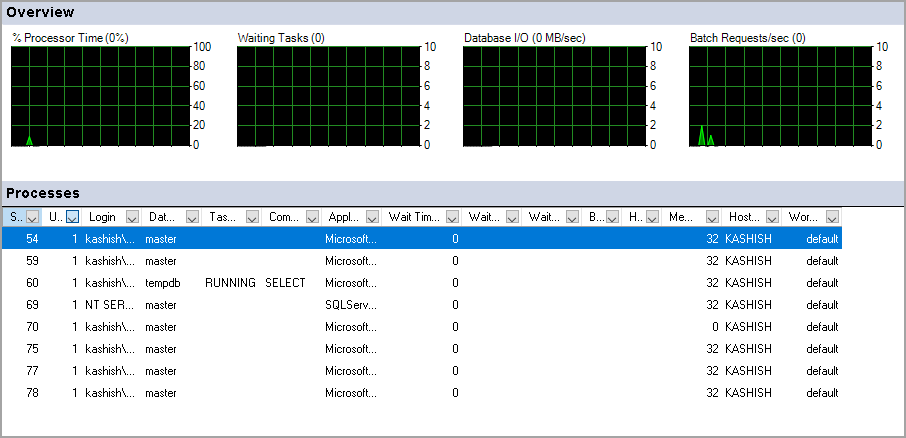



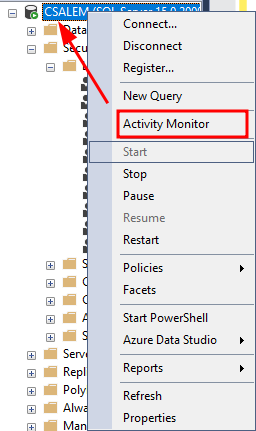
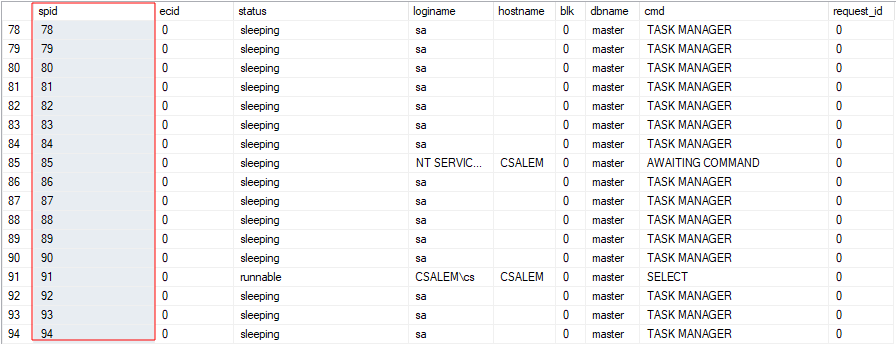




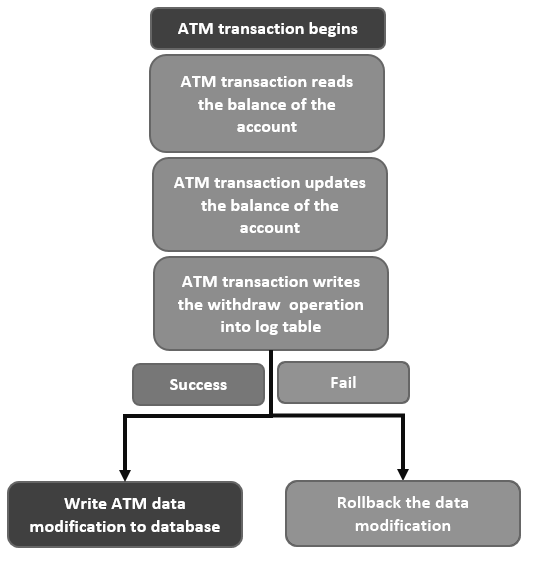
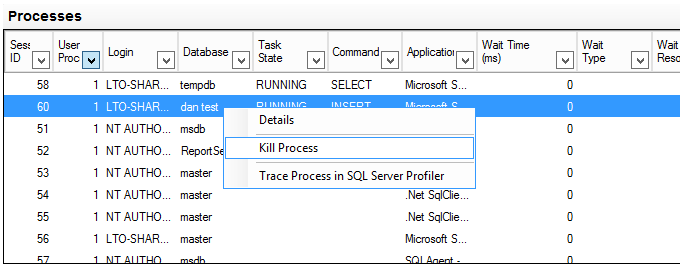

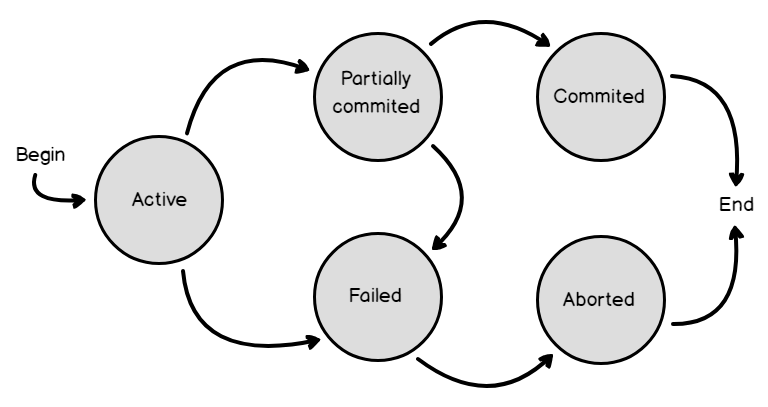


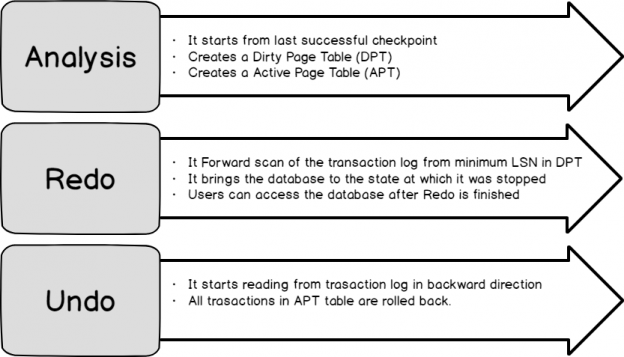





Article link: sql kill spid without rollback.
Learn more about the topic sql kill spid without rollback.
- KILL SPID command in SQL Server
- Killing a SPID and Checking Rollback progress in SQL Server
- SQL SERVER – SPID is KILLED/ROLLBACK state. What to Do …
- How to immediately terminate a SPID with a very long rollback …
See more: https://nhanvietluanvan.com/luat-hoc/